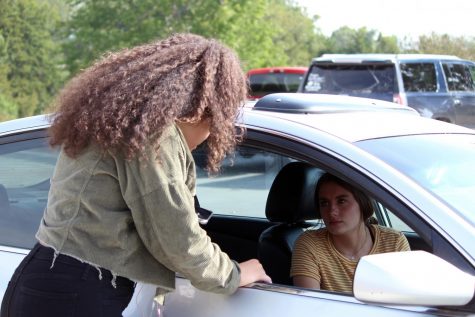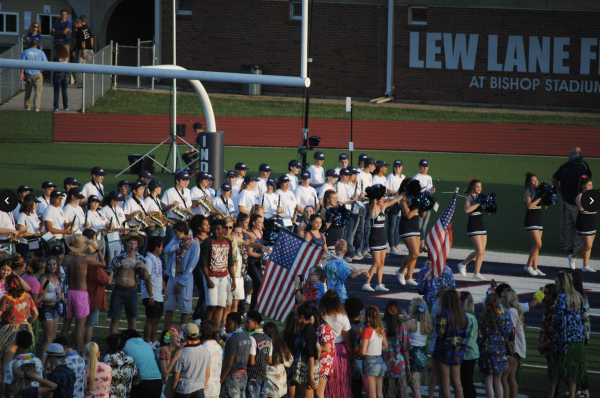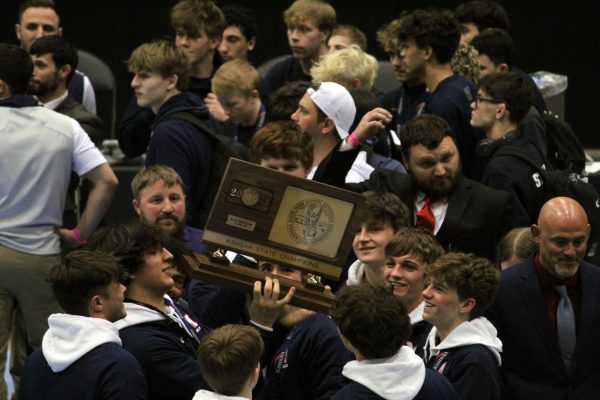Homecoming traditions clash with modern concept of gender
Homecoming traditions have been a part of American high school life since the beginning of the 20th century, and the celebration has seen little change since its creation. The elements of HoCo week are somewhat ubiquitous: there’s a dance, a football game, PowderPuff events and a vote for Homecoming king and queen.
However, a modern understanding of gender has thrown a wrench into the observation of these school spirit activities.
One of the main issues with Homecoming is the vote for king and queen. Having two categories, male and female, doesn’t line up with a scientific understanding of how gender works, which asserts that gender goes beyond just male and female biologically and psychologically.
“As someone who is Nonbinary, the whole [Homecoming] king and queen thing is very exclusionary,” Gender and Sexuality Alliance president Danny Montinez said. “There’s even ways to work around it. There’s a lot of royal terms other than king and queen that are gender neutral, so there could be things in replacement.”
Pride club — which is in charge of Homecoming — is working on changing how the Homecoming voting system works for future dances, but as of now they have not gone through the bureaucratic process required to change it.
“We’re in the works of changing and adapting Homecoming,” Pride officer Avery Koenekea said. “But for now Homecoming will be the same as it has always been because of the long process it takes [to change the voting system]… we’re trying to figure out what’s most inclusive to all sorts of different people without changing the tradition of Homecoming.”
There is also a concern about judging students based on no real school-related criteria. It harkens back to an era of beauty pageants where (mostly) girls were judged on good looks and charisma, such as the old Blue M queen tradition. The vote puts pressure on especially female students to look stereotypically pretty, potentially causing them to spend money for a separate outfit to be on the court as well as the dance along with other looks-related costs.
“If we removed gendered language from the situation, then it would make it better,” Feminist Club president Megan Long said. “But it would be even better if we just didn’t have these elections and recognized people, instead of having someone win, for the clubs and activities they’re part of.”
Similar to the vote, the dance and spirit week coming up often puts more pressure on girls to dress up than boys. According to a voluntary response poll conducted on The Mentor’s social media, male respondents had a 40% chance they were planning on spending more than $50 on Homecoming. However, among female respondents that chance jumped to 74%. There were not enough Nonbinary respondents to draw a conclusion about that demographic.
“That is something that can be extrapolated to the rest of society in general,” Long said. “Women are expected to spend more money on clothing, makeup, pretty much everything to do with maintenance and how you look, it’s more expensive for women. Especially because you can’t wear, or at least it’s not really socially acceptable to wear, the same dress to more than one school dance, but you can wear the same suit.”
Another gender-related criticism of Homecoming traditions is the PowderPuff football game and cheer team. The tradition involves boys performing a cheer routine at the pep rally and PowderPuff game and girls playing touch football. This to some suggests a reversal of roles, that girls are supposed to cheer and boys are supposed to play football, when there’s precedent from MHS history that these can be flipped.
“I do find amusement in the PowderPuff stuff,” Montinez said. “But it is definitely reinforcing gender roles more than it’s breaking them because it is making fun of all of the stereotypes. So it kind of goes both ways. I think it’s funny but it is a little counterproductive.”






